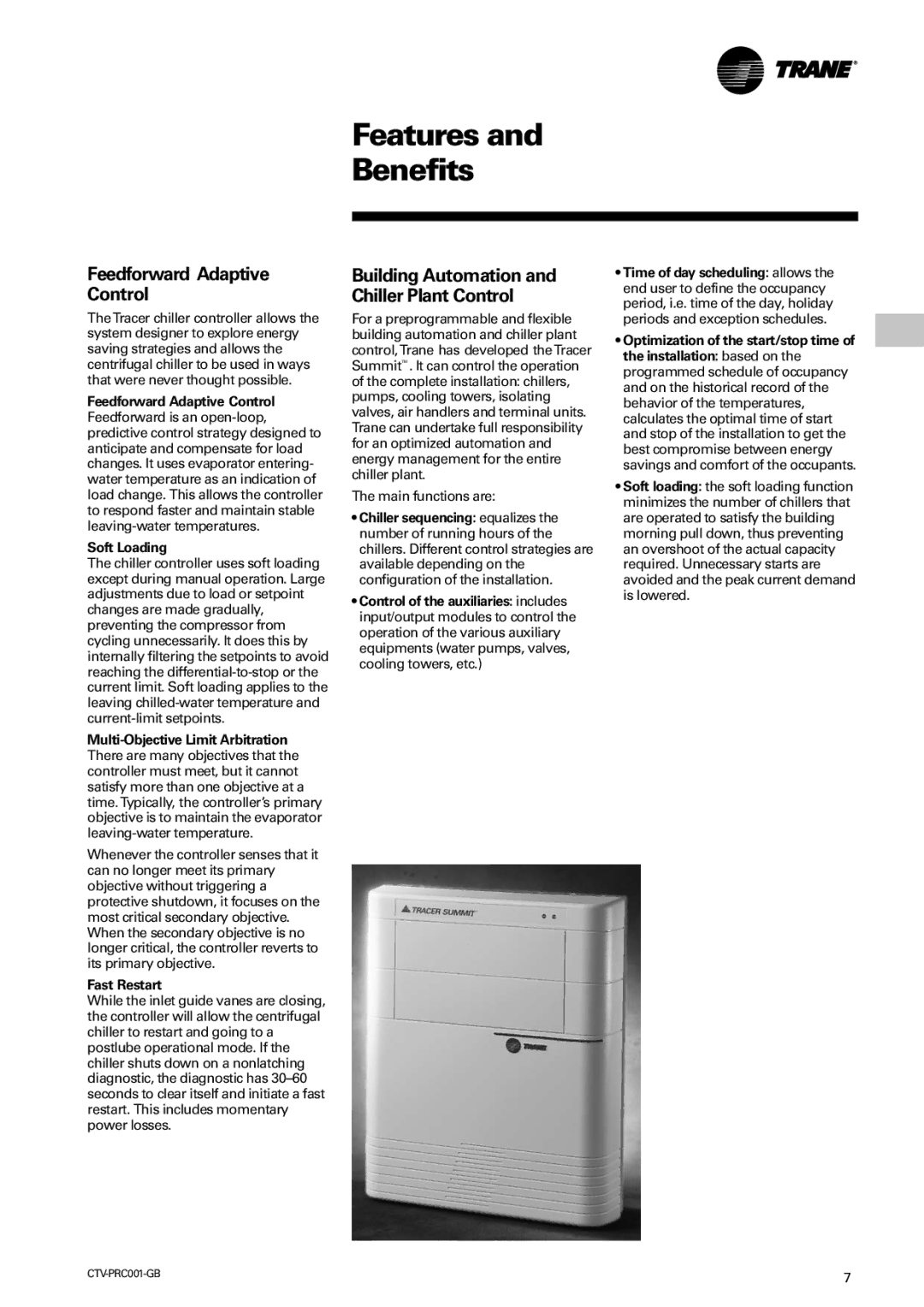CVGF specifications
The Trane CVGF series is a revolutionary innovation in the world of commercial HVAC systems, designed to deliver unparalleled performance and energy efficiency. This air-cooled chiller line is specifically engineered to meet the demands of modern buildings, making it an ideal choice for various applications such as offices, hospitals, and educational institutions.One of the standout features of the CVGF series is its use of the Trane Adaptive Control technology. This advancement provides the system with real-time data analytics, allowing it to automatically adjust cooling output based on environmental conditions and load requirements. This level of adaptability not only enhances occupant comfort but also contributes to significant energy savings, aligning with sustainability goals.
The CVGF chillers also incorporate a robust and efficient scroll compressor, which operates quietly and minimizes vibration. This design choice ensures reliability and longevity while reducing operational noise levels, making it suitable for installations in noise-sensitive environments. Furthermore, the scroll compressor's efficiency plays a crucial role in achieving a higher coefficient of performance (COP), which translates to lower energy costs.
In terms of environmental responsibility, the CVGF series is designed with an eco-friendly refrigerant that supports lower global warming potential (GWP). Committed to sustainability, Trane ensures that these chillers not only meet but exceed regulatory requirements, allowing businesses to operate with a reduced carbon footprint.
Another remarkable characteristic of the CVGF line is its modular design, which simplifies installation and maintenance. The units are compact and can be easily integrated into existing infrastructure, minimizing disruption during upgrades or replacements. The straightforward maintenance protocols further enhance the system’s uptime, ensuring users enjoy consistent and reliable cooling performance.
Moreover, the CVGF chillers are equipped with advanced monitoring capabilities, accessible through Trane’s proprietary software. This feature enables facility managers to oversee system performance from any location, facilitating proactive adjustments and timely maintenance interventions.
Overall, the Trane CVGF series stands out as a cutting-edge solution for effective and sustainable cooling in commercial applications. By combining innovative technologies, energy-efficient design, and user-friendly features, the CVGF offers a comprehensive approach to achieving optimal climate control while meeting the challenges of the future.

